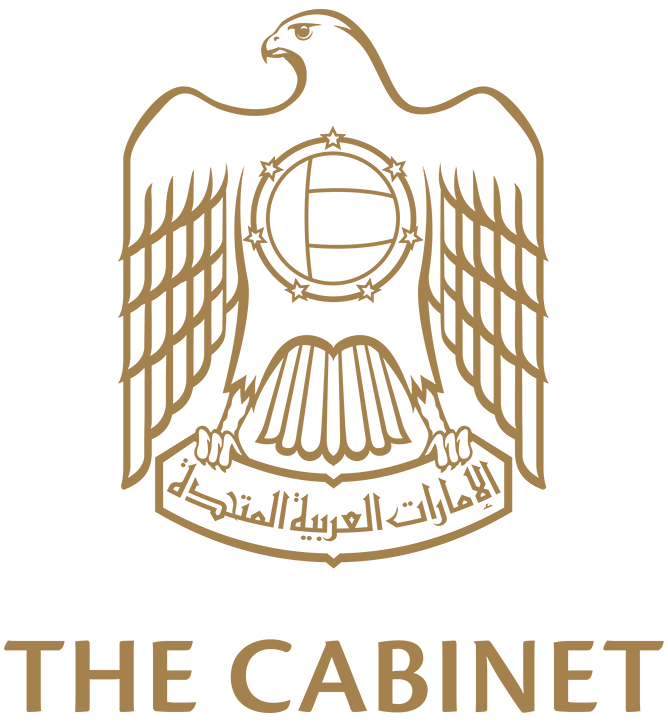- Article (1) Definitions
- Article (2) Controls of Accepting Conformity Certificates from the Approved Entity
- Article (3) Risk Assessment Report
- Article (4) Controls of Risk Assessment Report Submission
- Article (5) Risk Assessment Report Requirements
- Article (6) Unsafe Product Entry Prevention
- Article (7) Mechanisms of Verifying Safe Products
- Article (8) Preventive and Remedial Measures and Procedures of Product Withdrawal and Recall
- Article (9) Market Supervisory Procedures
- Article (10) Information Provision
- Article (11) Complaints and Reports
- Article (12) Implementing Resolutions
- Article (13) Repeals
- Article (14) Publication and Enforcement
Article (1) Definitions
The Definitions set out in Federal Law No. (10) of 2018, referred to hereinabove, shall apply hereto; otherwise, the following words and expressions shall have the meanings assigned thereto respectively, unless the context requires otherwise:
Ministry: The Ministry of Industry and Advanced Technology.
Minister: The Minister of Industry and Advanced Technology.
Market: Places and facilities designated for sale, rental or exhibition, or fairs designated for sale or exhibition, including free zones and electronic markets.
Approved Entity: An entity approved by the Ministry having the capacity and technical competence on the preparation and issuance of product risk assessment and analysis reports, in accordance with international referential approaches and practices in the area of risk assessment studies.
Law: Federal Law No. (10) of 2018 Concerning Product Safety.
Article (2) Controls of Accepting Conformity Certificates from the Approved Entity
Without prejudice to Article (4) of the Law, a product is deemed safe if it meets the accredited standards that cover safety aspects of the product, or it conforms to any other standard issued by an Approved Entity outside the State, approved by the Ministry. An entity is deemed approved according to the following controls:
1. If accredited under Cabinet Resolution No. (35) of 2015, referred to hereinabove.
2. If accredited based on international standards by internationally recognized entities or it operates within a system of international multilateral recognition.
3. If it operates under the supervision of government authorities having agreements or memoranda of understanding with the Ministry for mutual recognition of conformity certificates or accreditation procedures.
Article (3) Risk Assessment Report
1. If the two cases in Item (1) of Article (4) hereunder do not apply to the product, the supplier shall provide "a risk assessment report on the product or its aspects" to the Ministry, provided that it is issued by any of the following Approved Entities:
a. A factory holding recognition, accreditation, or approvals that its product is safe.
b. The competent authority.
c. A university, center, laboratory or qualified research and study institute approved by the Ministry.
d. A health or medical center approved by the Ministry.
e. Any other authority accepted by the Ministry.
2. The Ministry shall examine and accept the report referred to in Item (1) above and shall issue the appropriate decision thereon.
Article (4) Controls of Risk Assessment Report Submission
The supplier shall comply with the following controls upon submitting the risk assessment report to the Ministry:
1. Labelling the product or its external package with data and information that include all information on the identity and address of the supplier responsible for putting the product on the market, references related to the product, production batch to which the product belongs, where required, and any other information required by the Ministry.
2. Providing information to consumers on risks inherent in the product over the normal period of use and within uses intended and anticipated for the product if such risks are unspecific, provided that such information include the following:
a. Product characteristics, including its components, packaging, use or assembly instructions and installation and maintenance instructions, depending on the product nature.
b. Stating how to use the product with other products and the impact thereof if it is possible to be used with other products.
c. Product label and any warnings for anticipated risks in a clear and understandable way.
d. Instructions related to the safe use and storage of the product, method of disposal of the product or any parts thereof or any warning or indicative signs or information related to the product.
e. Information related to categories of vulnerable consumers when the product is used by them, particularly children, the elderly, pregnant women and the disabled.
f. Writing the information on the product label, brochures, and user guides of the product in Arabic and English as a minimum requirement, depending on the nature of each product.
3. Avoid using misleading claims when the product is put on or promoted contrary to standards and regulations issued by the Ministry.
4. Declaring that the product is safe.
5. Tracing out the product put on the market to ensure that the product will remain safe.
6. The product shall fulfill legislative requirements in force in the State, pertaining to environment, health, and safety.
7. Being aware of risks or accidents and harms that may arise from such product while being put on markets or used.
8. Minimizing and addressing risks and harms, including the withdrawal or recall of an unsafe product and announcing the same by methods and procedures determined by the competent authority.
Article (5) Risk Assessment Report Requirements
In addition to the requirements set out in Item (2) of Article (4) of the Law, the report referred to in Article (3) above shall be based on examinations and tests supported by scientific evidence using the available modern technology, in accordance with controls identified or accepted by the Ministry. The report shall include the following:
1. Supplier's information and address.
2. Information on carriage, storage, display, and safety.
Article (6) Unsafe Product Entry Prevention
Customs authorities in the State shall prevent the entry of an unsafe product, as per the following controls:
1. If it is established that the product is unsafe, pursuant to the provisions of the Law and the present Resolution.
2. Absence of a certificate issued by the Ministry or the Approved Entity confirming that the requirements of a safe product have been fulfilled.
Article (7) Mechanisms of Verifying Safe Products
1. The Ministry shall provide an appropriate mechanism, in coordination with customs authorities in the State, to verify safe products.
2. The Ministry or the Approved Entity shall issue a certificate or statement on the condition of the safe product for each shipment.
Article (8) Preventive and Remedial Measures and Procedures of Product Withdrawal and Recall
If a change in the product characteristics is found and the product is turned into an unsafe product as a result of normal use, based on the controls set forth in Article (4) above, the supplier shall withdraw and recall the products from the market according to the following:
1. Products shall be withdrawn or recalled from the market when they are found unsafe, particularly the following products:
a. Products confirmed to be hazardous due to design or manufacture defects.
b. Products found and subsequently confirmed that they do not fulfill the standards and requirements of a safe product.
c. Products not in conformity to legislation and standards related to the product.
d. Products not in conformity to the applicable legislation in the State, such as not using quality labels or signs, product labels or required energy efficiency labels, for which adequate remedial actions have not been taken by the relevant suppliers or manufacturers.
2. If the competent authority finds an unsafe product is put on markets, based on market survey procedures, it shall obligate the supplier to withdraw or recall such product.
3. The supplier may withdraw or recall the product if found that the product preventative measures against potential risks are inadequate, and where the supplier deems such withdrawal or recall is necessary, provided that the final approval of the withdrawal and recall falls within the Ministry's competence.
4. If unsafe products are reported, the competent authority shall verify the product through the external examination thereof, taking and testing samples in an accredited lab or making a risk analysis for the product to verify the risk thereof. If it is established that the product is unsafe and constitutes a high risk, the supplier shall withdraw or recall it at the request of the competent authority, pursuant to the provisions of the Law and the present Resolution.
5. If the supplier fulfills remedial actions of the product that has been withdrawn or recalled and wishes to re-trade the product, the supplier shall:
a. Provide full information on the remedial action that has been taken.
b. Provide a new risk assessment report on the product after the remedial action, provided that it is issued by an Approved Entity.
c. Provide a report indicates that the product fulfills the conformity requirements according to the report.
Article (9) Market Supervisory Procedures
1. The competent authority may conduct supervision, market surveys and examinations appropriate for the product characteristics through document examination and inspection and conducting the required test of product samples, based on indicated or recognizable methods and means, in conformity with standards and manuals, as the case may be.
2. The Ministry shall coordinate with the competent authority, where required, to warn consumers against products identified by the same as high or moderate risk products.
3. The supplier shall cooperate with the competent authority to contribute to taking preventive and remedial measures to prevent or minimize risks caused by products put on markets.
4. Subject to the legislation in force in the State, the competent authority may access to facilities and premises of suppliers to take samples of products.
5. The competent authority shall make unscheduled or scheduled field visits to factories, customs storehouses and warehouses and vendors and conduct oversight during carriage and packaging to ensure the requirements of the Law and the present Resolution are fulfilled.
6. The competent authority may request technical documents of the product, testing reports and applicable procedures for the product manufacture and production.
Article (10) Information Provision
The Ministry shall, in coordination with the competent authorities, provide systems necessary for enabling consumers to obtain information on safe and unsafe products and actions taken thereon inside and outside the State.
Article (11) Complaints and Reports
The Ministry shall coordinate with the competent authorities to provide systems necessary for filing reports and complaints related to the safety of products and shall ensure taking necessary remedial actions.
Article (12) Implementing Resolutions
The Minister shall issue resolutions necessary for implementing the provisions of the present Resolution.
Article (13) Repeals
Any provision contradicting or repugnant to the provisions of the present Resolution shall hereby be repealed.
Article (14) Publication and Enforcement
The present Resolution shall be published in the Official Gazette and shall enter into force as of the day following the date of its publication.
Translated in cooperation with





